Rio de Janeiro’s Little Africa Heritage Walking Tour offers a captivating glimpse into the city’s Afro-Brazilian past. Tracing the footsteps of freed slaves, the tour highlights the vibrant neighborhoods, landmarks, and cultural influences that have shaped Rio’s identity. From the panoramic views of Mauá Square to the birthplace of samba, visitors will be immersed in the enduring legacy of African heritage, showcased through architecture, cuisine, and the arts. It’s a poignant journey that celebrates the resilience and contributions of the African diaspora, revealing the intricate tapestry of Rio’s history.
Key Points
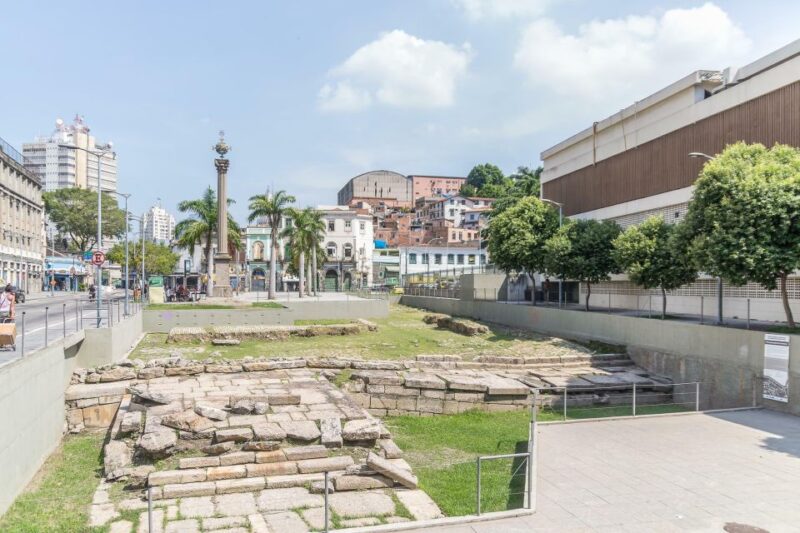
- Explore the neighborhoods of Rio’s port area, known as "Little Africa," which were home to freed slaves and reflect strong African cultural influence.
- Appreciate the panoramic views of Mauá Square and Guanabara Bay from the rooftop of the Rio Art Museum, offering a unique perspective on the city’s heritage.
- Discover the lasting impact of African heritage on Brazilian gastronomy, showcased by the vibrant flavors and culinary traditions at Largo da Prainha.
- Learn about the pioneering achievements of Mercedes Baptista, the first black dancer at the Municipal Theater, and the statue honoring her trailblazing legacy.
- Trace the origins of samba music at Pedra do Sal, the birthplace of this iconic Brazilian rhythm, and the UNESCO-designated Valongo Wharf, a poignant reminder of the transatlantic slave trade.
Historical Overview of Brazil’s Colonial Period
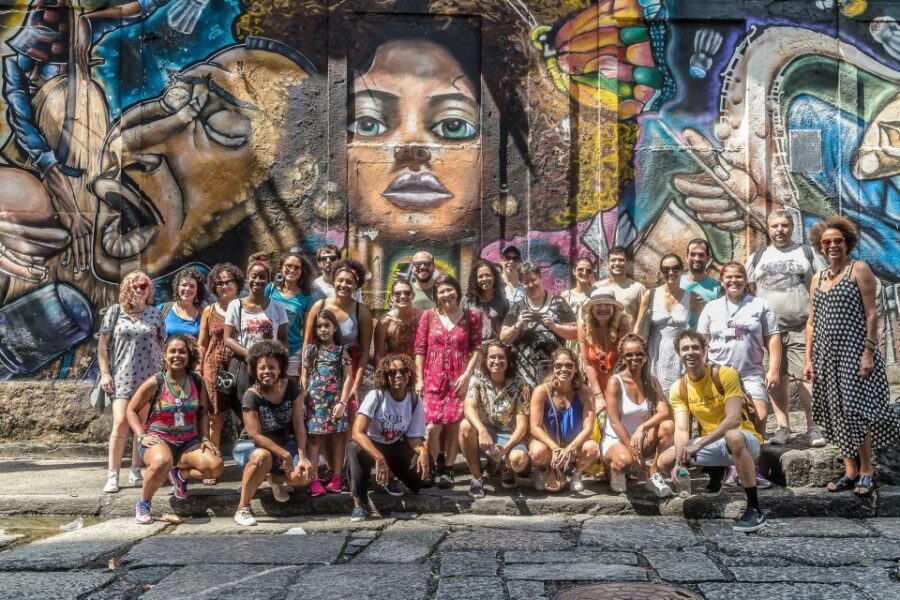
The tour begins at the Rio Art Museum, where visitors can gain historical context on Brazil’s colonial period and the significant influence of African heritage. The museum provides an overview of this era, highlighting how neighborhoods in Rio’s port area, known as "Little Africa" in the early 20th century, were home to many freed slaves after the abolition of the slave trade.
This historical backdrop sets the stage for the walking tour, which explores the lasting impact of African culture on the city’s architecture, cuisine, and identity as a hub of Afro-Brazilian heritage.
If you're enjoying exploring Rio De Janeiro on foot, you'll love these other walking tours we recommend
Neighborhoods of Rio’s Port Area
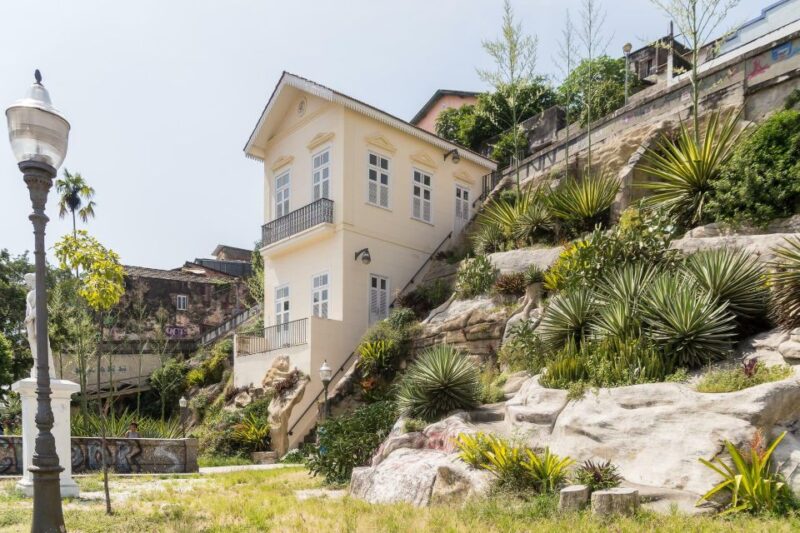
Neighborhoods in Rio’s port area were once known as "Little Africa" in the early 20th century, where freed slaves settled after the abolition of the slave trade. This area reflected the strong African cultural influence that persisted in the city, with vibrant communities, markets, and religious practices.
Today, the neighborhoods in Rio’s port area continue to showcase the legacy of this heritage, offering a glimpse into the city’s diverse history. Visitors can explore the area’s landmarks, such as Largo da Prainha, which showcases the African influence on Brazilian cuisine, and the statue honoring Mercedes Baptista, the first black dancer at the Municipal Theater.
Panoramic Views of Mauá Square and Guanabara Bay
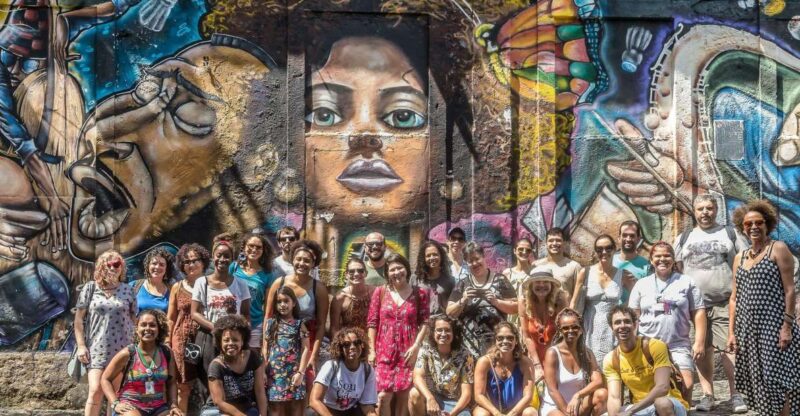
From the Rio Art Museum’s rooftop, visitors are treated to panoramic vistas of Mauá Square and the stunning Guanabara Bay. This elevated viewpoint provides an unparalleled opportunity to appreciate the architectural grandeur of the surrounding buildings and the natural beauty of the bay.
The sweeping panorama showcases the interplay between Rio’s urban landscape and its iconic waterfront, offering a unique perspective on the city’s heritage and vibrancy. This component of the Little Africa Heritage Walking Tour allows participants to gain a deeper understanding of the historical significance and visual splendor that characterize this dynamic neighborhood.
Influence of African Heritage on Brazilian Gastronomy
One key stop on the Little Africa Heritage Walking Tour is Largo da Prainha, where visitors can witness the profound influence of African heritage on Brazilian cuisine. This vibrant square showcases the diverse flavors and culinary traditions brought to Brazil by enslaved Africans. From the fragrant stalls selling acarajé – a savory street food of fried bean fritters – to the sizzling moqueca, a flavorful seafood stew, the African imprint on Brazilian gastronomy is undeniable. The following table highlights some of the iconic African-influenced dishes found in this cultural hub:
| Dish | Description |
|---|---|
| Acarajé | Fried bean fritters |
| Moqueca | Seafood stew |
| Vatapá | Creamy shrimp and coconut milk dish |
| Caruru | Okra-based stew |
| Efó | Leafy green stew |
Mercedes Baptista and the Municipal Theater
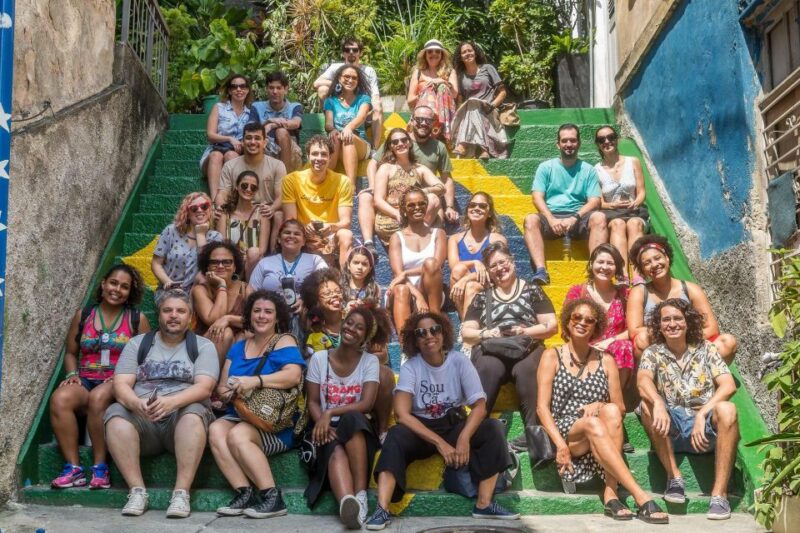
As visitors wander through the historic neighborhoods of Rio’s port area, they’ll come across a statue honoring Mercedes Baptista, the first black dancer to grace the stage of the prestigious Municipal Theater.
Baptista broke racial barriers in the 1950s, defying the era’s social norms. Her pioneering performances at the Municipal Theater paved the way for greater diversity and representation in the arts.
The statue serves as a tribute to Baptista’s trailblazing accomplishments, celebrating her legacy and the enduring influence of African heritage in Brazilian culture.
This symbolic landmark is a poignant reminder of the progress that has been made, and the work that remains to be done in promoting inclusivity and equity in the performing arts.
Fascinated by Rio De Janeiro's past? More historical tours we've covered
- Discover Rio Little Africa: A Cultural and Historical Journey
- Private Walking and Cultural Tour Rocinha-Rio De Janeiro
- Rio Gastronomy: Culture & History Through The Art Of Food – Walking Group Tour
- Olympic Boulevard, Museum of Tomorrow & Historical Rio
- Learn the History of Rio With an Unforgettable City Center Walking Tour
- Adventure & History at Tijuca Forest (Small Group or Private)
Birthplace of Samba in Rio
At the heart of Rio’s historic port district lies Pedra do Sal, which is widely regarded as the birthplace of samba. This area is the oldest continuously-inhabited black neighborhood in Brazil, and it was here that the rhythmic beats and soulful melodies of samba first emerged.
Visitors can explore this vibrant cultural hub, where the sound of live music and the scent of traditional African-Brazilian cuisine fill the air. The tour highlights the significance of this site, underscoring the enduring legacy of African heritage in shaping the musical and culinary landscape of Rio de Janeiro.
Valongo Wharf and the Slave Trade
The Valongo Wharf stands as a poignant reminder of Rio de Janeiro’s grim past as a major hub in the transatlantic slave trade. Thousands of enslaved Africans were brought to this site between 1811 and 1831, before the slave trade was finally abolished. Today, the Valongo Wharf has been designated a UNESCO World Heritage Site, honoring the memory of those who suffered through this inhumane chapter of history.
| Significance | Artifacts |
|---|---|
| Largest slave market in the Americas | Burial sites and remnants of slave quarters |
| Arrival point for over 900,000 enslaved Africans | Archaeological discoveries shed light on daily life |
| Symbol of the cruelty and dehumanization of the slave trade | Ongoing efforts to preserve and honor the site’s history |
The Little Africa Heritage Walking Tour provides a poignant exploration of this complex and important legacy.
The Largest Graffiti Mural in the World
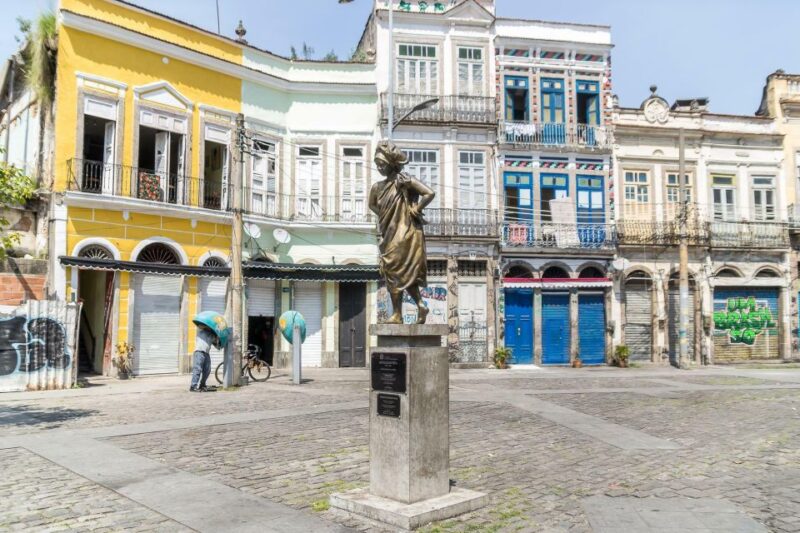
Towering over the Olympic Boulevard, the world’s largest graffiti mural captivates visitors with its vibrant colors and powerful imagery. Measuring an impressive 32,000 square meters, the mural was created by a team of 160 artists, showcasing Brazil’s rich cultural heritage.
Depicting Afro-Brazilian history, the mural features iconic figures, bold patterns, and striking visual narratives. As the final stop on the Little Africa Heritage Walking Tour, the mural serves as a poignant reminder of Rio’s diverse and complex past. Visitors can explore the intricate details and enjoy the vivid visual storytelling that adorns the bustling Olympic Boulevard.
Frequently Asked Questions
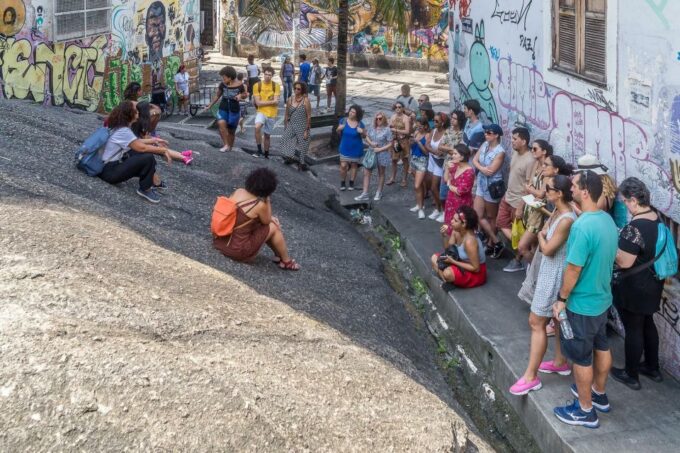
How Much Does the Little Africa Heritage Walking Tour Cost?
The cost of the Little Africa Heritage Walking Tour in Rio de Janeiro is not explicitly mentioned in the provided information. However, many heritage walking tours in Rio range from $20 to $40 per person.
How Long Does the Walking Tour Typically Last?
The Little Africa Heritage Walking Tour typically lasts around 2 to 3 hours, allowing visitors to explore the historical sites and cultural highlights of Rio’s former African-influenced neighborhoods at a leisurely pace.
Is the Tour Available in Multiple Languages?
The Little Africa Heritage Walking Tour in Rio de Janeiro offers the tour in multiple languages, allowing both local and international visitors to explore the city’s rich African heritage and history.
Are There Any Accessibility Accommodations for the Tour?
The tour offers accommodations for visitors with mobility challenges, including wheelchair access and guided assistance. Guided audio tours in multiple languages are also available to enhance the experience for international travelers.
What Is the Best Time of Day to Take the Tour?
The best time to take the tour is in the morning when the weather is cooler and crowds are smaller. This allows for a more comfortable and informative exploration of the historic neighborhoods and landmarks.
Recap
The Little Africa Heritage Walking Tour in Rio de Janeiro offers an immersive exploration of the city’s Afro-Brazilian legacy. From the panoramic vistas of Mauá Square to the birthplace of samba, the tour illuminates the enduring influence of African heritage on Rio’s identity. By tracing the footsteps of freed slaves, visitors gain a poignant understanding of the resilience and contributions of the African diaspora shaping Brazil’s vibrant culture.
You can check if your dates are available here:More Walking Tours in Rio De Janeiro
More Tours in Rio De Janeiro
- Rio De Janeiro: Downtown Walking Tour
- Unforgettable Private Day Tour in Rio – Santa Teresa and Downtown
- Rio Shore Excursion: Christ Redeemer, Sugarloaf and Selarón Steps 6-Hour Tour
- Half-Day Tour in Rio De Janeiro
- Private Speedboat Tour in Rio De Janeiro
- Petropolis the Imperial City With Beer Tour and Lunch
More Tour Reviews in Rio De Janeiro
- Discover Noronha: 7-Hour Ilhatour Adventure
- Private Sugar Loaf With Fast Pass Ticket and Hotel Pick up
- Rio De Janeiro: 30-Minute Tandem Paragliding Flight
- Rio De Janeiro: Vasco Da Gama Matchday Experience With Local
- Rio Essencial: the 3 Must-See Tourist Attractions
- From Rio: Arraial Do Cabo Day Trip With Boat Tour
Not for you? Here's more things to do in Rio De Janeiro we have recnetly reviewed
- 6 Best Canoe And Kayak Experiences In Rio De Janeiro
- 6 Best Canoe And Kayak Experiences In Rio De Janeiro
- 14 Best Food Tours in Rio De Janeiro
- 20 Best Full-Day Tours in Rio De Janeiro
- 2 Best 2 Day Tours In Rio De Janeiro
- 3 Best 3 Day Tours in Rio De Janeiro
- Best Jet-Ski Experiences in Rio De Janeiro
- 2 Best 4 Day Tours in Rio De Janeiro
- 3 Best BBQ Experiences In Rio De Janeiro
- 20 Best Photography Experiences in Rio De Janeiro
- 14 Best Dining Experiences In Rio De Janeiro
- 14 Best Dinner Tours In Rio De Janeiro
